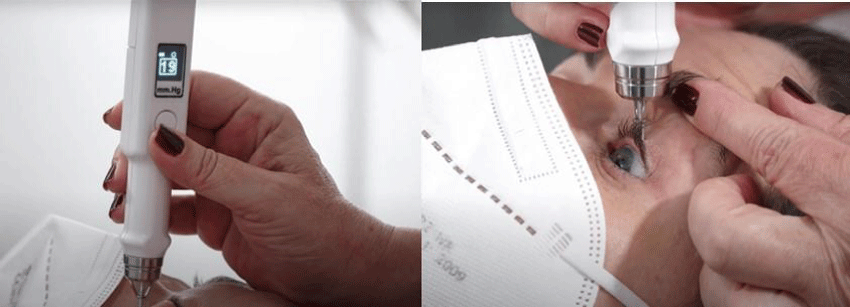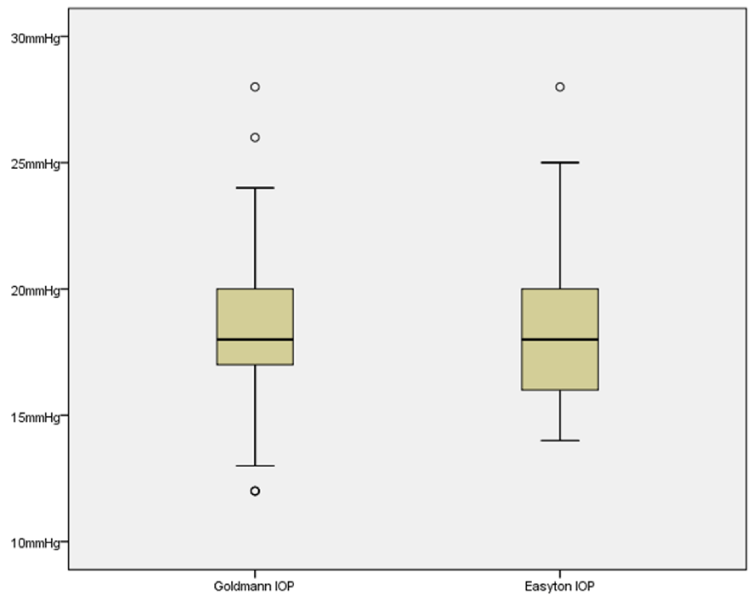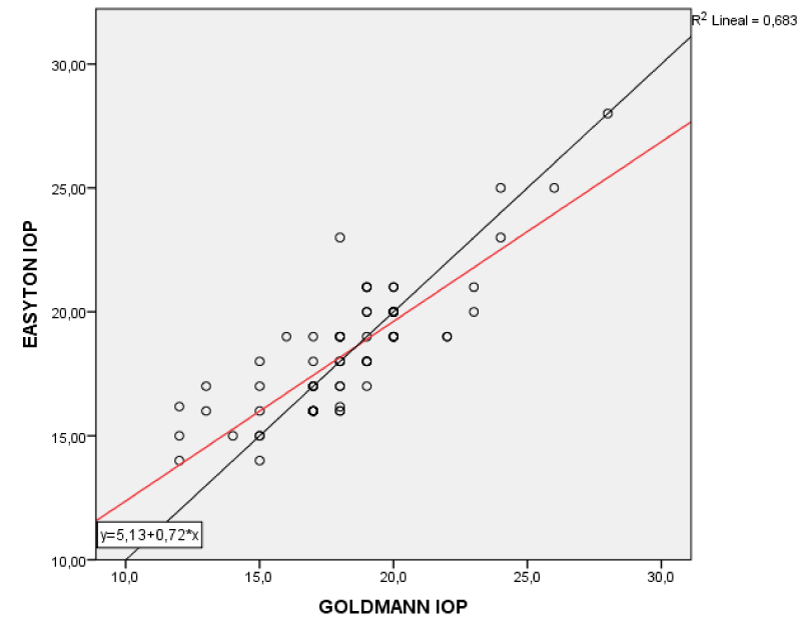Journal of Clinical Research and Ophthalmology
Possibilities of monitoring intraocular pressure using a transpalpebral scleral tonometry in cases of corneal and ocular surface pathology
María Ángeles del Buey1-4* and Paula Casas1
2Associate Professor of Ophthalmology, Department of Surgery, School of Medicine, University of Zaragoza, Spain
3Researcher at Instituto de Investigación Sanitaria de Aragón (IIS Aragón) Zaragoza, Spain
4Researcher at Results-Oriented Cooperative Research Networks in Health (RICORS) RD21/0002/0032. Carlos III Health Institute, Spain
Cite this as
Del Buey MÁ, Casas P (2022) Possibilities of monitoring intraocular pressure using a transpalpebral scleral tonometry in cases of corneal and ocular surface pathology. J Clin Res Ophthalmol 9(2): 015-016. DOI: 10.17352/2455-1414.000097Copyright License
© 2022 Del Buey MÁ, et al. This is an open-access article distributed under the terms of the Creative Commons Attribution License, which permits unrestricted use, distribution, and reproduction in any medium, provided the original author and source are credited.Cornea and ocular surface specialists need a form of tonometry for those cases where it is not possible to use Goldmann applanation tonometry (GAT) on the cornea. There are many situations in which the condition of the cornea prevents adequate monitoring of the intraocular pressure (IOP) with applanation tonometry, such as the existence of neurotrophic ulcers, corneal infections, or abscesses, corneal injuries or corneal de-epithelization. In addition, certain ocular postoperative situations, require a digital estimation of high or low pressure as the only option for IOP monitoring. This happens in the postoperative period of surgeries such as corneal collagen crosslinking (epi-off technique), surface refractive techniques (PRK, epi-LASIK), amniotic membrane grafts, corneal perforation treatments, presence of keratoprosthesis or therapeutic contact lens.
Digital IOP estimation requires experience and is also a subjective method of IOP assessment, so having access to an objective form of tonometry, such as transpalpebral scleral tonometry (TPST), opens a new window for IOP control in a group of patients with corneal and surface pathology, in whom glaucoma is a constant threat (Figure 1).
To evaluate the efficacy of TPST, we consider it important and necessary to carry out a prior evaluation of the diagnostic test, by assessing the repeatability of measurements, and a comparative study of GAT (gold standard) and TPST (with EASYTON tonometer) in healthy patients, without obvious corneal pathology. In this way, we could estimate the range of IOP values in patients with pathology, since, in these cases, we can only compare it with the digital determination of IOP.
In our assessment research, we designed a prospective study approved by the local ethics committee in which three TPST measurements, using the EASYTON® tonometer (Elamed Company, Russia), and one measurement using the traditional GAT technique, were sequentially performed on 73 right eyes of 73 control patients (aged 24–83) (mean age 57.4 ± 16.3 years). In addition, 12 eyes of 12 patients undergoing corneal or surface surgery (penetrating keratoplasty, DSAEK, and pterygium) were evaluated with TPST and digital palpation tonometry in the immediate postoperative period (1-2 and 7 days). We evaluated the post-surgical cases subjectively in normal tone by palpation, ocular hypotonia, and hypertonia. Subsequently, we carried out an objective IOP measurement with EASYTON and assessed the correlation of results.
IOP measurements with TPST and GAT were made by the same doctor (M.A.D.B). First of all, each of the tonometers was calibrated according to the manufacturer´s recommendations. With the patient lying down and the gaze slightly oriented downwards (Figure 1), three consecutive TPST measurements were obtained in the upper sclera. Fifteen minutes later, the same examinator instilled one drop of Colircusi Fluotest® (Alcon healthcare S.A.) and three GAT values were recorded. Each group of measurements was averaged to compare and correlate with the other group.
Our results were as follows:
- No patients had adverse effects during the procedure for IOP obtaining. All patients referred to the process as “undisturbed” or “slightly unpleasant”.
- The mean IOP measurement spread (as demonstrated by three consecutive IOP measurements with EASYTON) was 1.32 mmHg. The intraclass correlation coefficient for TPST was __0.98__, thus showing a high degree of intrasession repeatability. The values of three consecutive IOP measurements with EASYTON TPST either were exactly the same or differed by no more than 2 mmHg.
- The mean IOP measured using the TPST was 18.2 ± 2.9 (12 - 28) mmHg in the control group. Using GAT was 18.3 ± 2.5 (14-28) mmHg in the control group (Figure 2). There were no statistically significant differences between both variables for the same sample (p = 0.607, paired t - Test).
- The correlation between GAT and TPST (Pearson test) was 0.827 (p-value <0.05), therefore we observe a positive and strong correlation between both variables. Figure 3 shows a linear regression line, for each mmHg of increase in GAT-IOP, there is a 0.72 mmHg of increase in TPST-IOP.
- During the second evaluation, a high degree of similarity of IOP measurements with palpation and TPST was demonstrated in the operated eyes after corneal and surface surgery.
After reviewing these results, we can conclude that TPST demonstrated safety, repeatability, and efficacy comparable to GAT. TPST is a valid option in patients with IOP less than 30 mmHg as demonstrated by this study. In addition, it could prevent the subjectivity of IOP measurements with palpation in cases of corneal and surface pathology such as penetrating or lamellar keratoplasty and other corneal or surface surgeries and provides objective tonometry. The avoidance of contact with the cornea, high repeatability, and the lack of negative effects justifies the use of this device in compromised corneal cases. In addition, IOP determination by easyton has other advantages over other portable tonometers. There is no contact with the external ocular surface, so the use of topical anesthetics or other disposable material is not necessary; transmission of infections is not a problem.
The main limitation of this study is the number of patients included. In addition, future studies in patients with IOP above 30 mmHg corroborate the efficacy of this device in glaucomatous or hypertensive eyes. Finally, we must emphasize that this method should be evaluated (and may not be the most appropriate) in cases of scleral alteration such as high myopia, inflammatory scleral pathology, or cases of previous filtering scleral surgery where the IOP measurement should be tested in other location different from the upper one.

Article Alerts
Subscribe to our articles alerts and stay tuned.
 This work is licensed under a Creative Commons Attribution 4.0 International License.
This work is licensed under a Creative Commons Attribution 4.0 International License.



 Save to Mendeley
Save to Mendeley
